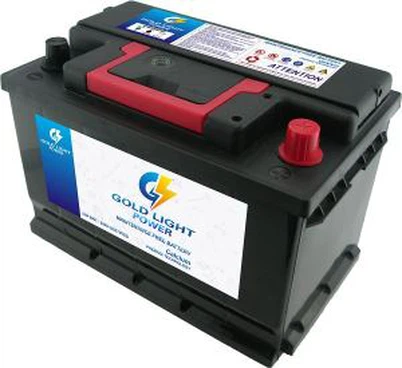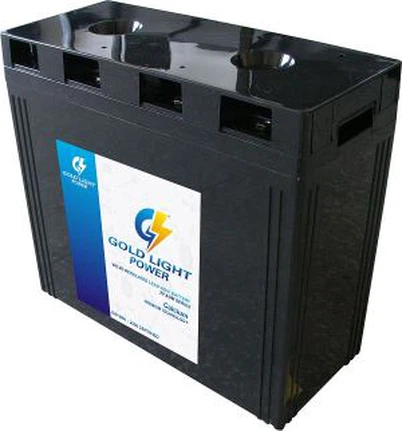How does the design of a battery affect its price?
Leave a message
Hey there! I'm a supplier in the battery business, and I often get asked about how the design of a battery affects its price. It's a super interesting topic, and today, I'm gonna break it down for you.
Let's start with the basics. The design of a battery isn't just about how it looks; it's about the materials used, the construction, and the technology behind it. All these factors play a huge role in determining the cost.
Materials Matter
One of the biggest factors in battery design is the materials used. Different materials have different costs, and these costs are directly reflected in the price of the battery. For example, lithium-ion batteries are known for their high energy density and long lifespan. They use lithium compounds in their electrodes, which are relatively expensive compared to other materials. This is why lithium-ion batteries are often pricier than lead-acid batteries.
Lead-acid batteries, on the other hand, use lead and sulfuric acid. These materials are more abundant and cheaper, which makes lead-acid batteries more affordable. However, they have a lower energy density and a shorter lifespan compared to lithium-ion batteries. So, if you're looking for a cheap and reliable battery for short-term use, a lead-acid battery might be the way to go. But if you need a battery with high performance and long lifespan, you'll have to pay a premium for a lithium-ion battery.
Another material factor is the quality of the materials. Higher-quality materials often result in better performance and longer lifespan, but they also come with a higher price tag. For example, a battery with high-purity electrodes will have better conductivity and less internal resistance, which means it can deliver more power and last longer. But these high-purity materials are more expensive to produce, so the battery will be more expensive as well.
Construction and Design Features
The construction of a battery also affects its price. Batteries with more complex designs and advanced features usually cost more. For example, a sealed maintenance-free battery is more expensive than a traditional flooded battery. Sealed batteries are designed to be leak-proof and require no maintenance, which makes them more convenient and safer to use. However, the technology and materials used to make them sealed are more expensive, so the price is higher.
Battery size and capacity are also important factors. Generally, larger batteries with higher capacities cost more. This is because they require more materials and more complex manufacturing processes. For example, a N200 12v200ah Maintenance Free Automobile Battery has a larger capacity and is more powerful than a smaller battery. It can provide more energy for a longer time, but it also costs more due to the additional materials and manufacturing requirements.
Some batteries come with special design features that add to their cost. For example, some batteries have built-in protection circuits to prevent overcharging, over-discharging, and short-circuiting. These protection circuits add an extra layer of safety and reliability, but they also increase the cost of the battery.
Technology and Innovation
The technology used in a battery can have a significant impact on its price. Newer and more advanced technologies often come with a higher price. For example, solid-state batteries are a new type of battery that uses solid electrolytes instead of liquid or gel electrolytes. Solid-state batteries have several advantages over traditional batteries, such as higher energy density, faster charging times, and better safety. However, the technology is still in its early stages of development, and the manufacturing process is more complex and expensive. As a result, solid-state batteries are currently much more expensive than traditional batteries.
On the other hand, older and more established technologies are usually more affordable. For example, the lead-acid battery technology has been around for a long time, and the manufacturing processes are well-established and efficient. This is why lead-acid batteries are relatively cheap compared to newer battery technologies.


Market Demand and Competition
Market demand and competition also play a role in determining the price of a battery. If there is high demand for a particular type of battery and limited supply, the price will go up. Conversely, if there is low demand and high competition, the price will go down.
For example, the demand for electric vehicles (EVs) has been increasing rapidly in recent years. This has led to a high demand for lithium-ion batteries, which are the most commonly used batteries in EVs. As a result, the price of lithium-ion batteries has been relatively high. However, as more manufacturers enter the market and the production capacity increases, the price of lithium-ion batteries is expected to decrease in the future.
In the automotive battery market, there is a lot of competition. There are many different brands and models of batteries available, each with its own price and features. For example, our Hot Sales Africa Nigeria Market Din75 12V75Ah MF Starter Car Battery and Top Selling DIN Low Maintenance Free 12v45ah Car Battery Manufacturer With Low Price are designed to meet the different needs and budgets of our customers. We strive to offer high-quality batteries at competitive prices to stay ahead in the market.
Conclusion
In conclusion, the design of a battery has a significant impact on its price. The materials used, the construction, the technology, and the market demand all play a role in determining how much a battery costs. As a battery supplier, I understand the importance of finding the right balance between price and performance for our customers. Whether you're looking for a cheap and reliable battery or a high-performance battery with advanced features, we have a wide range of options to choose from.
If you're interested in purchasing batteries for your needs, don't hesitate to reach out to us. We're always happy to discuss your requirements and provide you with the best solutions at the most competitive prices. Let's start a conversation and find the perfect battery for you!
References
- Linden, D., & Reddy, T. B. (2002). Handbook of Batteries. McGraw-Hill.
- Tarascon, J.-M., & Armand, M. (2001). Issues and challenges facing rechargeable lithium batteries. Nature, 414(6861), 359-367.





